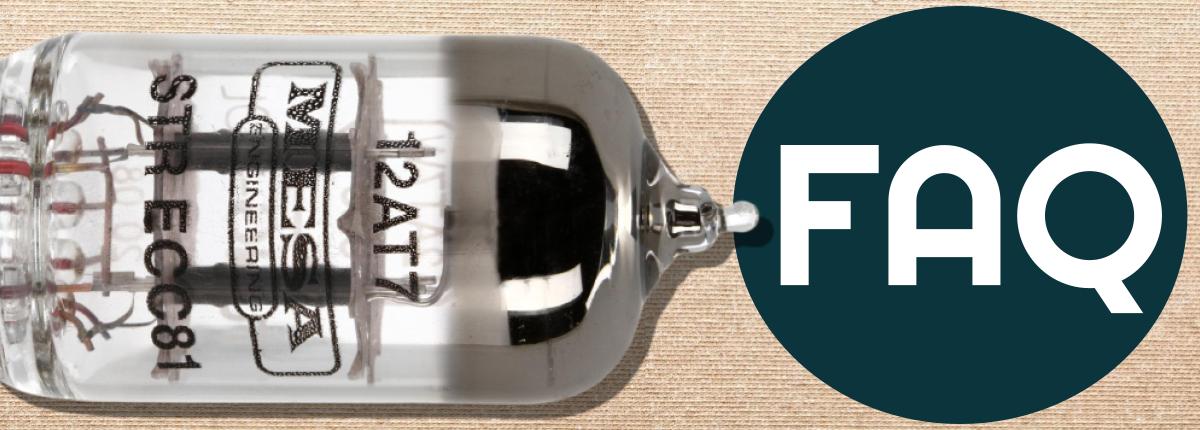
By Ed Malaker
Posted 02/27/2019
Preamp Tube FAQ: What Do Preamp Tubes Do?
Preamp Tubes amplify the very low signal coming from your guitar. With this step, the amplified signal is better prepared to go through the circuitry of your amplifier. The signal then goes to your EQ controls, your Reverb, Auxiliary Outputs, and also into your Output Tubes. All tubes are essentially mini amplifiers within your amplifier.
How Long Do Preamp Tubes Last?
Preamp Tubes deal with much less current than Power Amp tubes, and therefore, they can last a much longer time and rarely need to be changed. Tubes do occasionally go bad, but some manufacturers claim that their Preamp Tubes will last 10,000 hours or more.
It’s not uncommon for Preamp Tubes to last the lifetime of the amplifier, with only a need to change them if you want to change the amplifier’s sound.
Do Preamp Tubes Need to Be Biased?
All tubes need to be Biased because it is part of how they work, but many lower-powered amplifiers — like preamplifiers — use a design called Self-Biasing. Self-Biasing designs use a resistor to set the Bias, which allows a user to use different tubes without needing to manually set the Bias yourself, every time. This design is not well suited to higher-powered amplifiers, so Power Tubes usually need to be Biased manually.
How Often Should I Change Preamp Tubes?
Preamp tubes can last a very long time and rarely – if ever – go bad and need to be changed. The only real reason to change preamp tubes in your amplifier is if you’re looking for a different tone, and want to try different types of tubes to achieve this.
How Do I Know If My Tubes Are Bad?
The easiest, and best, way to tell if any tube is bad is to use a testing device called a Tube Tester. A Tube Tester is the only way to be positive about the condition of your tubes, but there are a few things you can look for if you don’t have one.
- Tubes need to be heated to work properly, so you can check to see if the filament in the tube is working by looking for a soft orange glow. Sometimes the filament is well hidden and you won’t be able to see it, but you should also notice heat coming from the tube itself. If there is no heat, and no glow, the tube is no good.
- The next thing to look at is the Getter. The Getter is the grey, silver, or black, coating inside of the tube. If there is an air leak in your tube and air gets in, the Getter will turn a pure white color and you will know that the tube is bad.
- You can also look for a purple glow that is very focused on a specific component inside the tube. Do not confuse this with a blue glow that is near the glass. If you see the purple glow, the tube is not functioning properly and should be discarded.
- The next thing to look for is any loose pieces in the glass casing itself. Any loose pieces that are not connected will mean the tube is broken.
- Preamp tubes can become microphonic when they are going bad. This means that they start to amplify sounds besides your guitar, like people walking across your floor, or ambient noise, and this will also cause feedback. If you notice that your amplifier is acting this way, it probably means one or more of your preamp tubes is starting to go bad.
